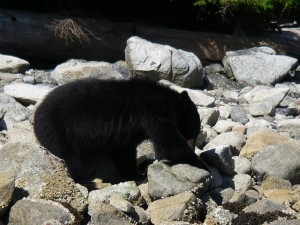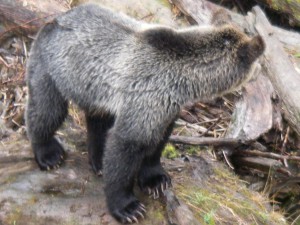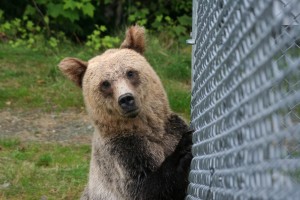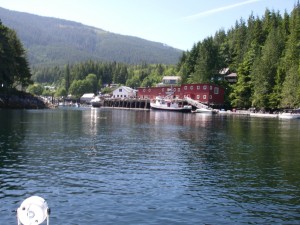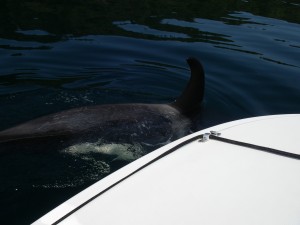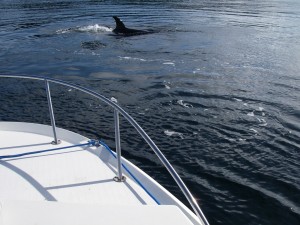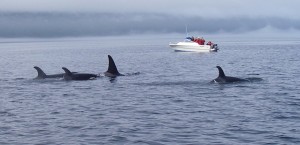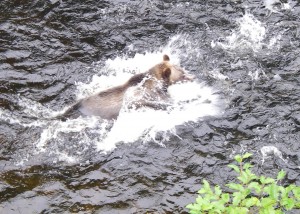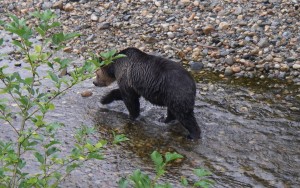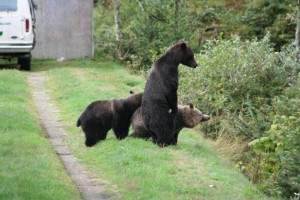This black bear was viewed on one of the evening tours that happen on your arrival day. A local wildlife boat trip is taken to familiarize guest with boats and guides as well as finding black bear, bald eagles, harbour seals etc. This bear is looking for it’s evening meal located under rocks. This inter-tidal zone “food” is high in protein and is made up of crab, clams, barnacles, amphipods and other tiny invertebrates. The “beach food” is important because plant food is relatively scarce during spring and bears will continue to loose weight until well into June. Yes it is a large rock and the bear did turn it over with a little effort.
